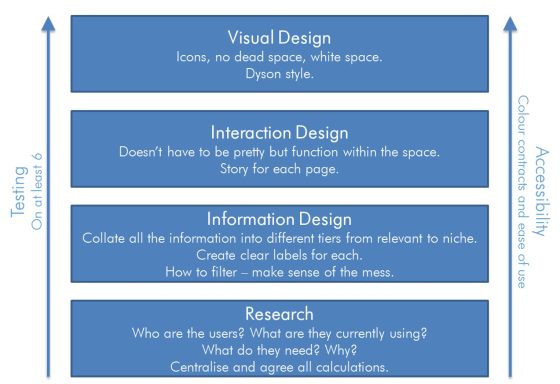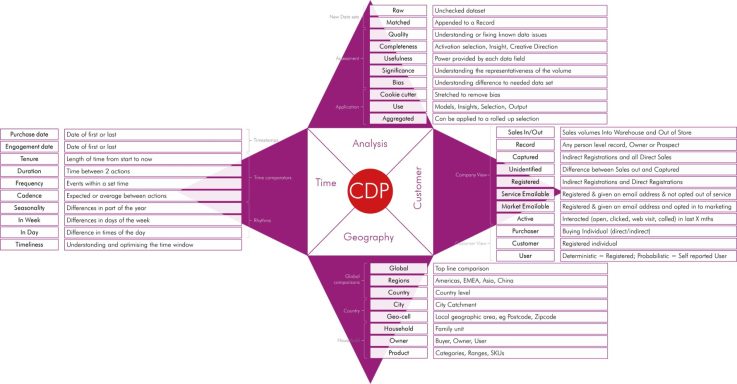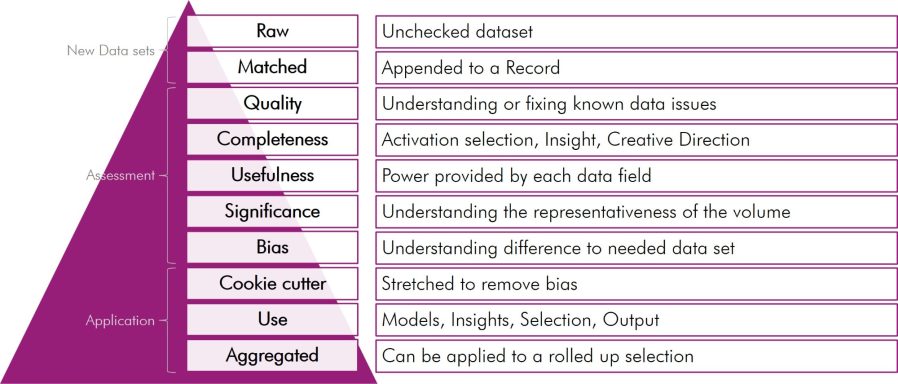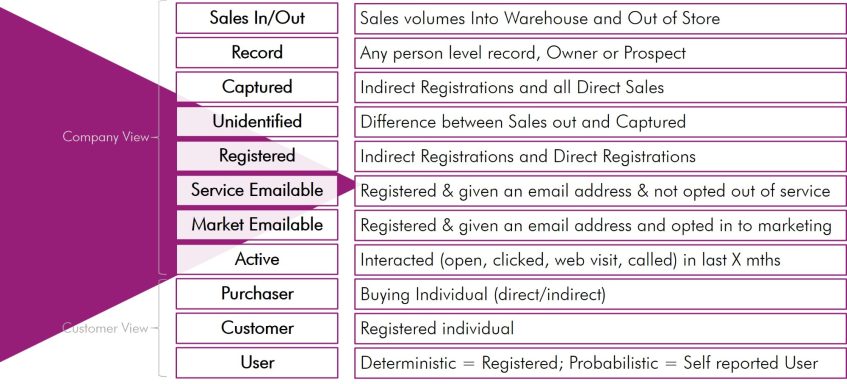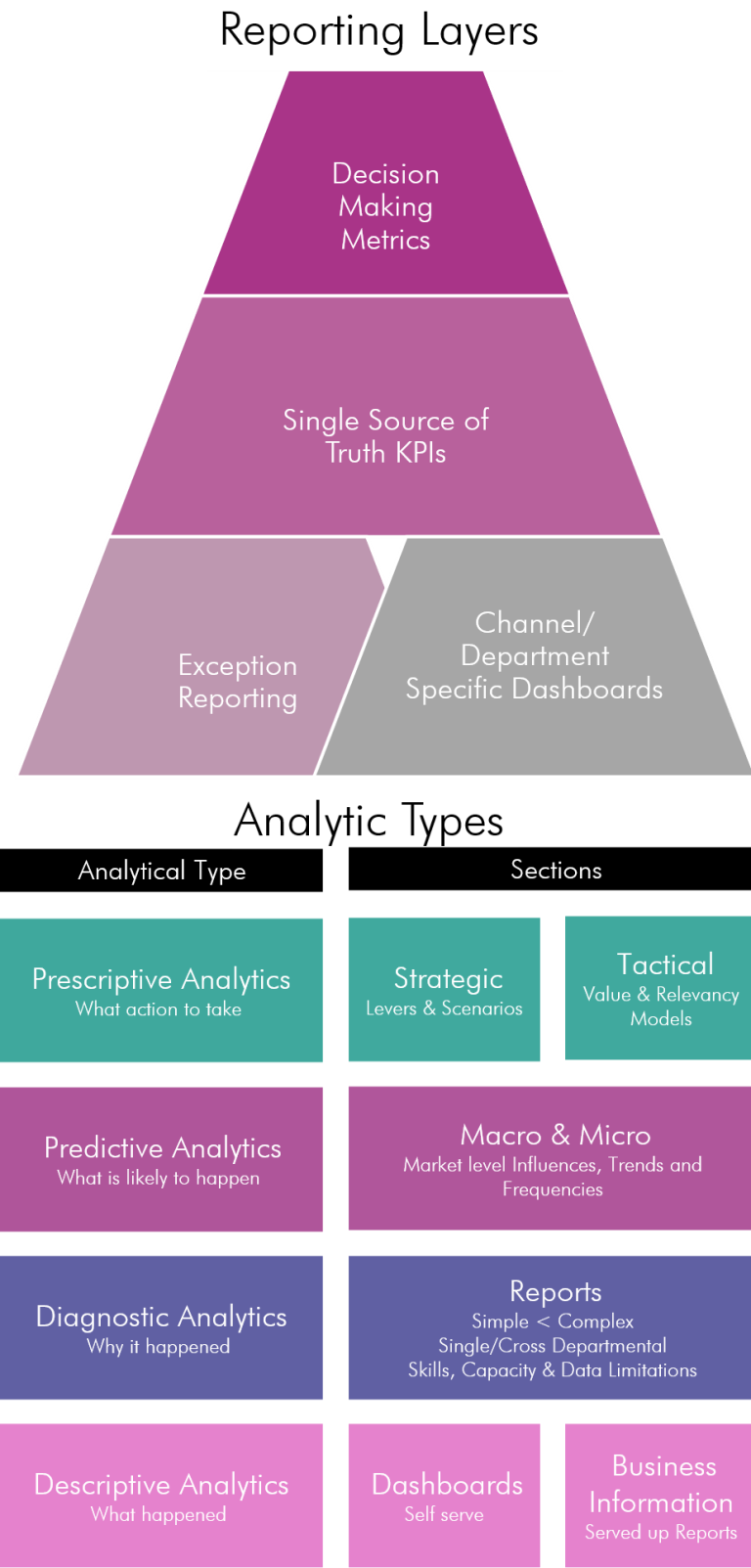
Business Information & Measuring
"Any figure that looks interesting or different is usually wrong. The more unusual or interesting the data, the more likely they are to have been the result of an error of one kind or another." - Twyman's law
Metrics mostly look as they should or move very slowly. The skill is to know what is important and what is not, otherwise analysis paralysis kicks in.
Reporting Layers
o Exception Reporting: Use rules and parameters to alerts of issues to ‘fix-on-fail’ specialist before others use flawed metrics. Can also be handy to use similar automatic summaries to condense interesting results or trends.
o Dashboards: Set up a suite of self-serve dashboards with user guide, use case and monitor the use metrics. Will save a lot of asks.
o Single Source of Truth: Embed the single version, with the same data sources, merging/purging rules, calculations and filter options enables more powerful comparison conversations. "A man with a watch knows what time it is. A man with two watches is never sure." - Segal's law
o Decision Making Metrics: Could be unique to the company or the question, but essential to monitor the core objectives.
Analytic Types
o Descriptive: What happened? Campaign level usually via self-serve dashboards, or deep-dive insight reports.
o Diagnostic: Why did it happen? Authors need to have context to answer this, so usually by the originator of the campaign or the question.
o Predictive: What is likely to happen? Like a weather forecast, can soon become unreliable and people only remember when it’s wrong.
o Prescriptive: What action to take? By far the most powerful analytical type for business optimisation and automation. Can take on the decisions humans are bad at leaving them to do the actions they are good at. Tactical tools include Value and Relevancy models. Strategic tools include scenario-running to balance out the macro leavers before key campaign seasons.
Measurement depends on a well understood 'exam question' and use cases, to definitively align the calculation/KPI with what is included and what is not.
“Without big data analytics, companies are blind and deaf, wandering out onto the web like deer on a freeway.” - Geoffrey Moore
Acronyms, etc
o ABM - Account Based Marketing
o ACV - Annual Contract Value
o Allowable cost - The max allowed to be spent in total per sale
o AOV - Average Order Value
o API - Application Programming Interface
o ARR - Annual Recurring Revenue
o B2B - Business to Business
o B2C - Business to Consumer
o Bidding - Manual bidding: sets max CPC per ad group. Automated bidding: set maximum bid limits for strategies like maximize clicks, target impression share, tCPA and tROAS. For enhanced CPC, however, Google could spend more than your max CPC.
o CAC - Customer Acquisition Cost
o CEO - Chief Executive Officer
o CFO - Chief Financial Officer
o CMO - Chief Marketing Officer
o CMS - Content Management System
o CPA - Cost per Action. Target CPA bidding is an automated bid strategy that sets bids for you to get as many conversions or customer actions as possible. When you select the target CPA (cost per action) bid strategy, you set your desired average cost per conversion. Google Ads uses your target CPA to set a bid based on the likelihood of the ad to convert.
o CPC - Cost Per Click. Paying for each click through to your site.
o CPL - Cost per Lead. Set price per lead, perhaps from Affiliates or Partners
o CPM – Cost per 1000 impressions (views). For See > Think but may be better for more niche products as more scalable
o CPM - Cost per thousand
o CPV - Cost per View. For Think > Do.
o CRM - Customer Relationship Management (software)
o CRO - Chief Revenue Officer
o CRO - Conversion Rate Optimization
o CTR – Click Through Rate. Ratio of Clicks to Views
o DA - Differential advantage, also known as Competitive Advantage, is the holistic package that sets you apart, connects all USP and initially hidden (purchasers view) differences
o DAM - Digital Asset Management
o DMP - Data Management Platform
o DSP - Demand Side Platform
o EMS - Event Management Software
o Google Daily Average Budget - spend could be more or less depending on demand and matches. Will never pay more per month than 30.4xDaily Average Budget
o Google Spending Limit - maximum spent per day, usually put at 100% or double the daily average budget
o ICP - Ideal Customer Profile
o KPI - Key Performance Indicator
o LTV - Lifetime Value
o MAP - Marketing Automation Platform
o MCM - Marketing Campaign Management
o MLOps - Machine learning operations
o MQL - Marketing Qualified Lead
o MRR - Monthly Recurring Revenue
o PPA - Pay Per Acquisition
o PPC - Pay Per Click
o ROAS - Return on Adspend, looks at revenue of specific or a group of campaigns divided by cost
o ROI - Return on Investment
o ROI – Return on Investment, looks at profit. Nett Profit/Nett Spend
o SEM - Search Engine Marketing. Visibility/Traffic from Organic and Paid [Google Ads]. Objective is to (Do) convert (sales, signups, leads) from active searchers. Secondary goal is for building brand awareness, recognition, loyalty (See, Think)
o SEO - Search Engine Optimization is focused on optimizing a website in order to get traffic from organic search results
o SERP - Search Engine Results Page
o SLA – Service Level Agreement
o SMM - Social Media Marketing
o SQL - Sales Qualified Lead
o SQL - Structured Query Language code
o STDC - See, Think, Do, Care. Simplified version on the purchase journey/marketing funnel
o URL - Uniform Resource Locator, unique identifier used to locate a resource on the Internet
o USP - Unique selling point. A subpart of the DA, a single feature that you identify with that is levered for intent and relevancy
o UTM – Urchin Tracking Module, snippet of code added to a URL for the purpose of tracking online marketing performance and better understanding audience behaviour
o VOC - Voice of Customer
o WOW – Way of Working
o YOY - Year Over Year
We need your consent to load the translations
We use a third-party service to translate the website content that may collect data about your activity. Please review the details in the privacy policy and accept the service to view the translations.

